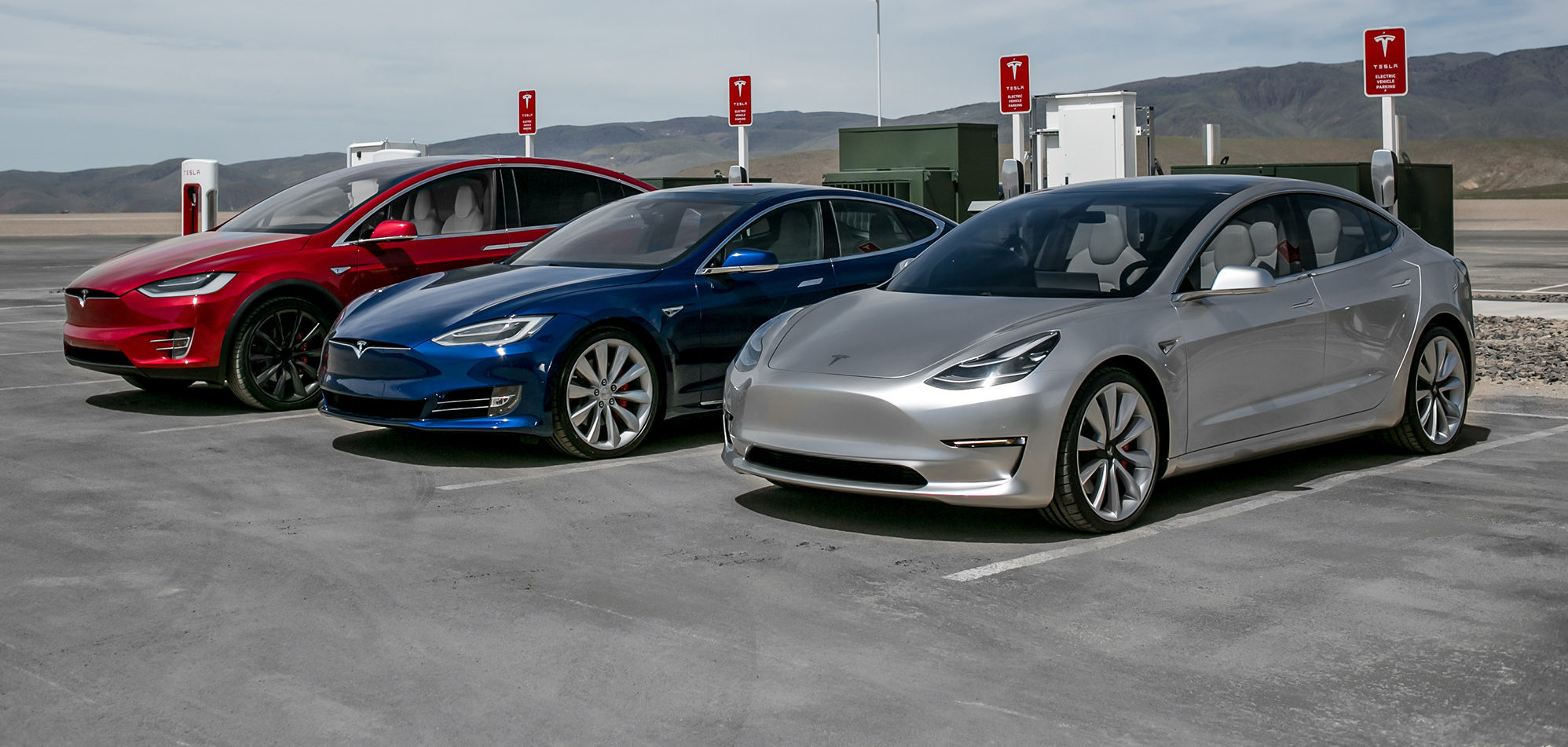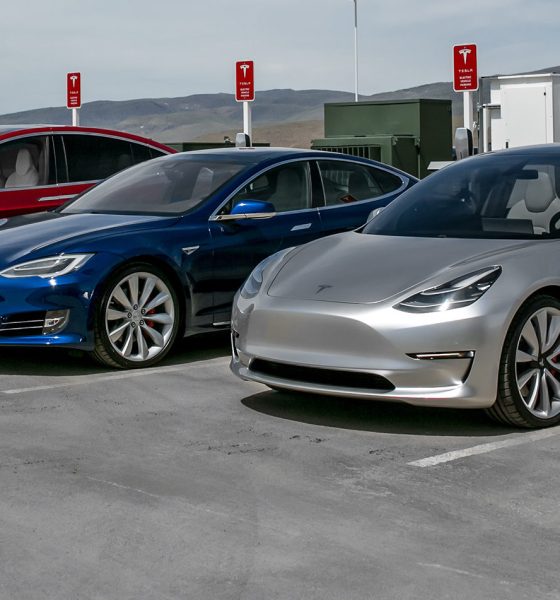

Investor's Corner
The Tesla Killer’s death and Elon Musk’s long-term play on batteries, vertical integration
At a press conference last year at Volkswagen’s global headquarters in Wolfsburg, Germany, VW Chairman of the Board Herbert Diess stated that “anything that Tesla can do, we can surpass.” The VW boss even noted that its dedicated MEB electric car architecture would give the company cost advantages at a scale that’s out of Tesla’s reach.
This year, the Tesla Model 3 is steadily making its presence known in the United States auto market. In September alone, the Model 3 was listed as the 4th best-selling passenger car in the US, beating the ubiquitous Toyota Corolla Family. Tesla also finished Q3 on a strong note, manufacturing a total of 80,142 electric cars including 53,239 Model 3, as well as delivering a total of 83,500 vehicles, comprised of 55,840 Model 3, 14,470 Model S, and 13,190 Model X. This Q4, Tesla seems poised to deliver and produce an even more impressive number of vehicles.
For years, Tesla skeptics have pointed at upcoming competition from legacy automakers as a reason for the impending fall of the electric car maker. Just like Herbert Diess, many of Tesla’s critics pointed out that legacy auto’s years of experience, as well as their network of factories, should allow them to leapfrog Tesla in the electric car market as soon as they decide to enter the electric car market.
As companies like Mercedes-Benz, Audi, Jaguar, and Porsche are learning today, though, it is not so simple to build a compelling electric car that’s capable of challenging Tesla’s premium vehicles in their respective segments. Mercedes-Benz, for one, has announced that the EQC — its plush competitor for the Model X — will adopt a gradual rollout due to possible warranty concerns over the vehicle’s battery and other electric car components. German news agency Bild am Sonntag recently noted that the Audi e-tron would be released later than expected as well, due to a software issue and ongoing discussions with its battery provider, LG Chem, which is allegedly adjusting the price of the vehicle’s batteries.
Even legacy carmakers that seem to be fully embracing the transition to electrified transport seem to be learning a lesson in designing and producing electric cars. Jaguar, for one, recently confirmed that the I-PACE has a range of 234 miles per charge, lower than the company’s initial estimates for the vehicle. Porsche, on the other hand, is preparing to build the Taycan, but even workers at its plant in Stuttgart, Germany have to pitch in to make the car a reality. Porsche head of production Albrecht Reimold, for one, noted that employees at the Taycan’s upcoming factory would not have regular salary increases for the next few years as the Taycan’s factory gets constructed.
With legacy automakers revealing their highly-anticipated Tesla competitors, and with each company running into challenges of their own, analysts are starting to retire myth of the “Tesla Killer.” Last month, Toni Sacconaghi of Bernstein, a known skeptic of the electric car maker, stated that the Model 3 faces “no credible competition” from legacy auto until at least 2020. More recently, Berenberg analyst Alexander Haissl reiterated a Buy rating on TSLA stock with a $500 price target, stating that fears over competition from legacy automakers are overblown. Haissl further noted that Tesla’s driving ranges and vehicle efficiencies are well ahead of the competition.
Perhaps the most notable death knell on the Tesla Killer myth came from known TSLA short-seller-turned-long Andrew Left of Citron Research; who pointed out that “there is NO Tesla killer. Competition is nowhere to be found, and no electric vehicle is slated to launch at the Model 3 price point until 2021.”
Ultimately, Tesla’s prominent lead in the electric car market is the culmination of Elon Musk’s long-term play on electric car batteries and the company’s vertical integration. Since Tesla is producing its own battery cells from Panasonic’s lines in Gigafactory 1, the company is saving itself from any of the issues currently being faced by Audi as it struggles to reach a deal with LG Chem for the e-tron’s batteries, or Mercedes-Benz as it deals with uncertainties over the EQC’s battery warranty. The deep integration of Tesla’s hardware and software also creates a unified user experience that is not unlike Apple, allowing the company’s electric cars to perform at their best and preventing issues such as those being faced by Jaguar with regards to the I-PACE’s apparent inefficiency.
The death of the Tesla Killer and the improvements in Tesla’s Model 3 ramp, together with the announcement that the Q3 2018 earnings call would happen on Wednesday, appear to have improved investor sentiment for the company’s stock. On Tuesday, Tesla stock (NASDAQ:TSLA) rose $33.19, ending the day at $294.14, up 12.72% from Monday’s close.

Investor's Corner
Tesla stock closes at all-time high on heels of Robotaxi progress

Tesla stock (NASDAQ: TSLA) closed at an all-time high on Tuesday, jumping over 3 percent during the day and finishing at $489.88.
The price beats the previous record close, which was $479.86.
Shares have had a crazy year, dipping more than 40 percent from the start of the year. The stock then started to recover once again around late April, when its price started to climb back up from the low $200 level.
This week, Tesla started to climb toward its highest levels ever, as it was revealed on Sunday that the company was testing driverless Robotaxis in Austin. The spike in value pushed the company’s valuation to $1.63 trillion.
Tesla Robotaxi goes driverless as Musk confirms Safety Monitor removal testing
It is the seventh-most valuable company on the market currently, trailing Nvidia, Apple, Alphabet (Google), Microsoft, Amazon, and Meta.
Shares closed up $14.57 today, up over 3 percent.
The stock has gone through a lot this year, as previously mentioned. Shares tumbled in Q1 due to CEO Elon Musk’s involvement with the Department of Government Efficiency (DOGE), which pulled his attention away from his companies and left a major overhang on their valuations.
However, things started to rebound halfway through the year, and as the government started to phase out the $7,500 tax credit, demand spiked as consumers tried to take advantage of it.
Q3 deliveries were the highest in company history, and Tesla responded to the loss of the tax credit with the launch of the Model 3 and Model Y Standard.
Additionally, analysts have announced high expectations this week for the company on Wall Street as Robotaxi continues to be the focus. With autonomy within Tesla’s sights, things are moving in the direction of Robotaxi being a major catalyst for growth on the Street in the coming year.
Elon Musk
Tesla needs to come through on this one Robotaxi metric, analyst says
“We think the key focus from here will be how fast Tesla can scale driverless operations (including if Tesla’s approach to software/hardware allows it to scale significantly faster than competitors, as the company has argued), and on profitability.”

Tesla needs to come through on this one Robotaxi metric, Mark Delaney of Goldman Sachs says.
Tesla is in the process of rolling out its Robotaxi platform to areas outside of Austin and the California Bay Area. It has plans to launch in five additional cities, including Houston, Dallas, Miami, Las Vegas, and Phoenix.
However, the company’s expansion is not what the focus needs to be, according to Delaney. It’s the speed of deployment.
The analyst said:
“We think the key focus from here will be how fast Tesla can scale driverless operations (including if Tesla’s approach to software/hardware allows it to scale significantly faster than competitors, as the company has argued), and on profitability.”
Profitability will come as the Robotaxi fleet expands. Making that money will be dependent on when Tesla can initiate rides in more areas, giving more customers access to the program.
There are some additional things that the company needs to make happen ahead of the major Robotaxi expansion, one of those things is launching driverless rides in Austin, the first city in which it launched the program.
This week, Tesla started testing driverless Robotaxi rides in Austin, as two different Model Y units were spotted with no occupants, a huge step in the company’s plans for the ride-sharing platform.
Tesla Robotaxi goes driverless as Musk confirms Safety Monitor removal testing
CEO Elon Musk has been hoping to remove Safety Monitors from Robotaxis in Austin for several months, first mentioning the plan to have them out by the end of 2025 in September. He confirmed on Sunday that Tesla had officially removed vehicle occupants and started testing truly unsupervised rides.
Although Safety Monitors in Austin have been sitting in the passenger’s seat, they have still had the ability to override things in case of an emergency. After all, the ultimate goal was safety and avoiding any accidents or injuries.
Goldman Sachs reiterated its ‘Neutral’ rating and its $400 price target. Delaney said, “Tesla is making progress with its autonomous technology,” and recent developments make it evident that this is true.
Investor's Corner
Tesla gets bold Robotaxi prediction from Wall Street firm
Last week, Andrew Percoco took over Tesla analysis for Morgan Stanley from Adam Jonas, who covered the stock for years. Percoco seems to be less optimistic and bullish on Tesla shares, while still being fair and balanced in his analysis.

Tesla (NASDAQ: TSLA) received a bold Robotaxi prediction from Morgan Stanley, which anticipates a dramatic increase in the size of the company’s autonomous ride-hailing suite in the coming years.
Last week, Andrew Percoco took over Tesla analysis for Morgan Stanley from Adam Jonas, who covered the stock for years. Percoco seems to be less optimistic and bullish on Tesla shares, while still being fair and balanced in his analysis.
Percoco dug into the Robotaxi fleet and its expansion in the coming years in his latest note, released on Tuesday. The firm expects Tesla to increase the Robotaxi fleet size to 1,000 vehicles in 2026. However, that’s small-scale compared to what they expect from Tesla in a decade.
Tesla expands Robotaxi app access once again, this time on a global scale
By 2035, Morgan Stanley believes there will be one million Robotaxis on the road across multiple cities, a major jump and a considerable fleet size. We assume this means the fleet of vehicles Tesla will operate internally, and not including passenger-owned vehicles that could be added through software updates.
He also listed three specific catalysts that investors should pay attention to, as these will represent the company being on track to achieve its Robotaxi dreams:
- Opening Robotaxi to the public without a Safety Monitor. Timing is unclear, but it appears that Tesla is getting closer by the day.
- Improvement in safety metrics without the Safety Monitor. Tesla’s ability to improve its safety metrics as it scales miles driven without the Safety Monitor is imperative as it looks to scale in new states and cities in 2026.
- Cybercab start of production, targeted for April 2026. Tesla’s Cybercab is a purpose-built vehicle (no steering wheel or pedals, only two seats) that is expected to be produced through its state-of-the-art unboxed manufacturing process, offering further cost reductions and thus accelerating adoption over time.
Robotaxi stands to be one of Tesla’s most significant revenue contributors, especially as the company plans to continue expanding its ride-hailing service across the world in the coming years.
Its current deployment strategy is controlled and conservative to avoid any drastic and potentially program-ruining incidents.
So far, the program, which is active in Austin and the California Bay Area, has been widely successful.







